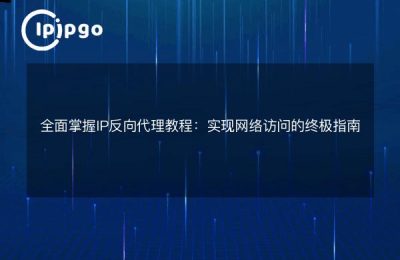
When it rains, it pours, and there are always problems that cause headaches. Especially in web development, how do you solve a problem that drives you crazy? Today, I'm going to share a great trick to get you out of the 404 reverse proxy problem.
wrong entry
Before solving the problem, we first need to understand the nature of the problem. Many times, when we are configuring our Nginx reverse proxy, we may accidentally go down the wrong path. The entry point for this mistake is our 404 page.
Nginx is a powerful web server that has a 404 page, which is the default page that is displayed when the server is unable to find the resource requested by the client. However, when we use Nginx for reverse proxying, sometimes this default 404 page hinders our progress and results in the return of a 404 error message, which is really unacceptable.
Modify the Nginx configuration file
To solve this problem, we need to make some changes to the Nginx configuration file. The steps are as follows:
First, we open the Nginx configuration file, which is usually located at the location `/etc/nginx/nginx.conf` or `/usr/local/nginx/conf/nginx.conf`.
Then, we find the `http` block and add the following code to it:
location / {
proxy_intercept_errors on;
error_page 404 =200 /index.html; }
}code resolution
Let's parse out how this code solves the Nginx 404 reverse proxy problem.
First, the `proxy_intercept_errors on` line of code serves to turn on Nginx's error blocking. When this option is turned on, Nginx will intercept all error messages returned by the backend server.
Second, the `error_page 404 =200 /index.html` line of code serves to redirect the 404 error page to the 200 status code page. In this way, we can avoid a real 404 error by returning the content of the 200 status code when a client requests a 404 page.
Finally, `/index.html` refers to the path of the page we wish to display. You can modify this path as you see fit to make sure it points to a real page.
Restarting the Nginx server
After modifying the configuration file, we need to restart the Nginx server for the changes to take effect. On Linux systems, you can use the following command to restart Nginx:
"`shell
sudo service nginx restart
“`
If you are using Windows, you can restart Nginx by typing the following command at the command line:
"`shell
nginx -s reload
“`
Problem solving
With the above steps, we have successfully solved the Nginx 404 reverse proxy issue. Now, when a client requests a 404 page, it will return a page content with a 200 status code so that the user does not feel any error. This is like a magic key that opens the door to moving forward.
The road to solving problems is not always bumpy, as long as we move forward and look for the right way, the problem will eventually be solved. I hope the content of this article can help you, so that you in the Nginx reverse proxy less detour. I wish you a bright future on the road of web development!








